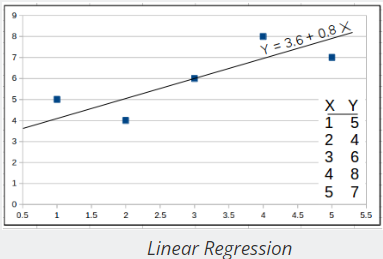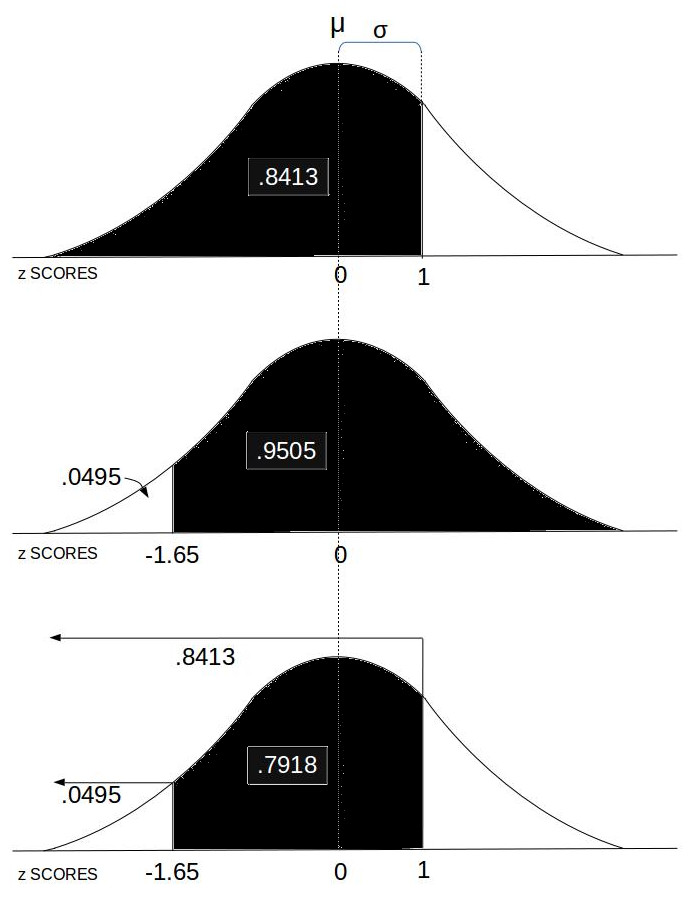The Observational Statistics calculator computes the most common observational statistics for columns in a table of data.
INSTRUCTIONS: Enter the following:
- (x) Numeric Observations. Enter rows of comma separated numeric values e.g. 4,-1.2,8,9 . To do so, click on the field and
- enter the data manual, or
- use cut / copy / paste, or
- upload a csv with a uniform table of real numbers.
- (c) Column Number.
STATISTICS: The calculator returns the descriptive statistics below for the identified column.
- count - number (n) of values in the column.
- min - minimum value
- max - maximum value
- sum(Σx) - sum of the values in a set.
- Σx² - sum of the squared values
- (Σx)² - square of the summed values.
- mean - mean (average) of values
- median - middle ordered value
- mid point - mid point of value range
- mode - most frequent observation
- range - difference between the max and the min.
- MAD - Mean Absolute Deviation
- SDOM - Standard Deviation of Mean
- sort up - values in ascending order.
- sort down - values in descending order.
- var-pop - population variance of the values
- sd-pop - population standard deviation of the values
- var-sample - sample variance of the values
- sd-sample - sample standard deviation of the values
How to Enter Data
Enter the data in comma separated values with a new line for each record. Note: it is important to be consistent with number of columns when manually entering the data.
One can also upload a CSV (comma separated values) file from your device into this calculator by clicking on the
. button.
Example
Enter the following tabular data and choose a column between 1 and 4:
-56,347,356,147
326,-116,386,-276
23,309,-230,-109
390,49,385,405
-87,289,32,33
-210,382,244,5
-85,206,386,44
318,-294,-16,-294
357,-152,-154,147
482,-16,-241,-191
-85,281,267,280
254,364,352,72
-32,-322,-90,-385
460,434,-89,461
23,49,-243,-42
128,-228,-137,-61
370,-75,32,-287
306,-387,51,33
-23,-282,467,271
You will see the observational statistics for that column.
This calculator is a prominent feature with other statistical functions in the College Level Statistics Calculator (Stat Calc).
Statistics Calculators
- Observational Stats: This function accepts a table (rows and columns separated by commas) of numbers and calculates observational statistics for any of the columns. This includes count, min, max, sum, sum of squares (Σx²), square of the sum (Σx)², mean, median, mode, range, mid point, rand, sort up, sort down, rand, population variance, population standard deviation, the sample/experimental variance, sample/experimental standard deviation.
- Simple Stats: This is also provides a full set of observational stats, but on a single row of numbers separated by commas. The observational stats include count, min, max, sum, sum of squares (Σx²), square of the sum (Σx)², mean, median, mode, range, mid point, rand, sort up, sort down, rand, population variance, population standard deviation, the sample/experimental variance, sample/experimental standard deviation.
- Frequency Distribution: This function lets you enter a string of numbers separated by commas, a low and high range and a number of bins. It then computes how many of the observations are in each of the bins between the high and low values designated.
- Paired Sample t-test: This computes the various parameters associated with the Paired Sample t-test.
- ANOVA (one way): The computes the F Score and details for one way analysis of variance for a nxm matrix of observations.
- (χ2) Chi-Square Test: This computes the Chi-Square value for an nxm array of data and provides the degrees of freedom.
- Linear Regression
 : This computes the regression line (least-squares) through a set of X and Y observations. It also computes the regression coefficient (r).
: This computes the regression line (least-squares) through a set of X and Y observations. It also computes the regression coefficient (r). - Least-squares Trend Inference : This is a linear equation used with Linear Regression to compute a predicted value of Y based on X.
- Wilcoxon Signed Rank Test: This provides the Wilcoxon statistics and critical value for two groups of numeric observations based on an alpha value and whether it's a one or two tailed test.
- Slope-Intercept form of a Line: This provides the slope intercept form (y = mx+b) of a line based on two coordinates.
- Slope between two points: This provides the slope between two coordinates.
- Linear Equation: This computes the range (y) of a linear equation (y = mx +b) and includes a graphing function.
- Probability between z SCORES:
 This computes the area under the Normal Distribution curve between two z SCOREs which equates to the probability of an event in that range.
This computes the area under the Normal Distribution curve between two z SCOREs which equates to the probability of an event in that range. - Stats Calc: College level statistics calculator with a bundle including most of the functions in this list.
- Count: This computes the number (n) of observations in a set of numbers.
- Minimum: This computes the minimum (min) value in a set of numbers.
- Maximum: This computes the maximum (max) value in a set of numbers.
- Numeric Sort: This sorts (ascending or descending) a set of comma separated numerical observations.
- Random Sample (k items): The provides a random subset of a specified size (k) in a set of comma separated numerical observations.
- Random Real Number in Range: The provides a random real number between two specified real numbers (upper and lower bounds).
- Radom Integer: The provides a random integer between two specified integers (upper and lower bounds).
- Frequency Distribution: This provides a frequency distribution table for a comma separated set of numbers with a specified number of frequency bins between a lower and upper data range.
- Sum (Σx): This is computes the sum of the values in a set.
- Sum of Squares (Σx²): This computes the sum of the squared values in a set.
- Sum Squared (Σx)²: This computes the square of the summed values in a set.
- Mean (μ): This computes is the mean (average) of values in a set.
- Median: This identifies the middle ordered value in a set of numbers.
- Statistical Mode: This identifies the most recurring observation in a set of numbers.
- Mid Point: This is identifies the mid point of the observation range in a set of numbers.
- Range: This is computes the difference between the max and the min values in a set of number.
- Population Variance (σ2): This computes the variance, a metric regarding the spread of values, for a population set of numeric values.
- Population Standard Deviation (σ): This computes the standard deviation for a population set of numeric values.
- Sample Variance (s2) : This computes the variance, a metric regarding the spread of values, for a sample set of numeric values within a greater population.
- Sample Standard Deviation (s): This computes the standard deviation for a sample set of numeric values within a greater population.
- z SCORE Formula: This computes the z SCORE for a value base on the mean and standard deviation.
- z SCORE: This computes the z SCORE for a value (Raw Score) based on a set of values, and whether that set is sample or population.
- Percentile: This computes the percentile of a value (y) in a set (X) of values.
- Standard Deviation of Mean (SDOM): This computes the standard deviation of mean, sometimes also known as the standard error of the mean (SEM), useful to helps quantify the uncertainty in the estimate of the mean.
- Percent Relative Standard Deviation (%RSD): This computes the percent relative standard deviation, also known as the coefficient of variation (CV). The %RSD is a measure of the dispersion of a probability distribution.
Thanks to Dr. Lee Hammerstrom, professor of math stats at Eastern Nazarene College, for his advice and testing.
The Math
The formulas for the statistics are as follows:
sum
`S = sum(x)`
sum of squares
Σx²`= sum(x^2)`
square of the sum
(Σx)² = `(sum(x))^2`
averages
- mean: `mu = (sum(x))/n` where n is the number of observations
- median: middle value if in an odd number of observations. If there is an even number of observations, it's the average of the two middle values.
- mid-point: `mp = (min + max)/2`
variance
- Population Variance: `sigma^2 = (sum_1^n(x_n-mu)^2)/n`
- Sample Variance: `sigma^2 = (sum_1^n(x_n-mu)^2)/(n-1)`
standard deviation
- Population Standard Deviation: `sigma = sqrt((sum_1^n(x_n-mu)^2)/n)`
- Sample Standard Deviation: `sigma = sqrt((sum_1^n(x_n-mu)^2)/(n-1))`
Mean Absolute Deviation
- MAD = `1/n sum_(i=1)^n | x_i - barx |`
Statistics Calculators
- Stats Calc - Complete set of entry level college statistics functions
- Simple Stats - Complete set of Observational statistics for a set of data
- Linear Regression - Least-squares trend line for a set of data
- One Way ANOVA - One way Analysis of Variance for three sets of data
Growth Calculators
- Logistic Growth
- Malthusian Growth Model
- Organism Count (Logistic Growth)
- Max Potential Growth Rate (biotic potential)
- How Many Ancestors
- Simple Stats Calc - Simple observation statistics (see below)
- Math Statistics Calc - College level statistics and regression calculator.
Statistics in Culture
"There are three kinds of lies: lies, damn lies and statistics." Mark Twain
